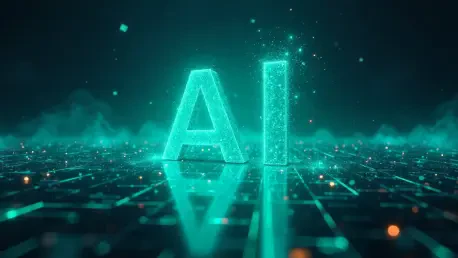Imagine a world where the vast majority of software code is not written by human hands, but by artificial intelligence, reshaping the very foundation of the tech industry in a matter of months. This bold vision was put forward by Anthropic CEO Dario Amodei, who predicted that AI could be responsible for writing 90% of code within a short timeframe. While this forecast has sparked intense debate, it also raises critical questions about the pace of AI adoption, the reliability of such tools, and the future of software developers. The reality of AI’s role in coding is unfolding at a more measured pace than anticipated, yet the trajectory remains undeniable. Tech giants are increasingly integrating AI into their workflows, and developers are grappling with both the opportunities and uncertainties this technology presents. This article delves into the current state of AI in software development, evaluates the accuracy of ambitious predictions, and explores the broader implications for the industry.
Current Landscape of AI in Software Development
AI Adoption Trends in Major Tech Companies
The integration of AI tools into software development has gained significant momentum, as evidenced by adoption rates among leading tech companies. Reports from industry giants like Google and Microsoft indicate that AI-generated code already accounts for a notable portion of their internal source code, with figures ranging from 25% to 30%. This shift highlights a growing reliance on AI to streamline coding processes, automate repetitive tasks, and boost productivity. However, these percentages fall far short of the near-total dominance envisioned by some predictions. The gradual increase in AI usage suggests a cautious approach, where companies balance innovation with the need for human oversight to ensure quality and accuracy. As AI tools become more sophisticated, their role is expanding, but the transition is marked by a deliberate pace that prioritizes stability over rapid upheaval in development practices.
Beyond the raw numbers, the adoption of AI in coding reflects a broader trend of technological integration within the industry. While some organizations have embraced AI to enhance efficiency, others remain hesitant, citing concerns over the readiness of these tools for widespread use. The data from major players indicates a pattern of experimentation rather than full commitment, with many firms testing AI capabilities in controlled environments before scaling up. This measured strategy underscores the complexity of integrating AI into existing workflows, as well as the need for robust training and support systems to bridge the gap between human and machine contributions. The current landscape reveals a field in flux, where AI’s potential is acknowledged, but its implementation remains a work in progress, shaped by practical challenges and strategic considerations.
Challenges and Limitations of AI-Generated Code
A significant barrier to AI’s dominance in coding lies in the persistent issues of accuracy and reliability that developers encounter. Surveys, such as those conducted recently within the developer community, reveal that nearly half of respondents harbor doubts about the correctness of AI-generated code, with many spending considerable time debugging and refining outputs. This skepticism is compounded by research showing that the time saved by using AI tools is often offset by the effort required to correct errors, diminishing the promised efficiency gains. The gap between expectation and reality highlights a critical challenge: while AI can produce code quickly, ensuring its functionality and alignment with project goals remains a human-intensive task. This dynamic suggests that AI is better suited as a supportive tool rather than a standalone solution in the current environment.
Ethical and security concerns further complicate the adoption of AI in software development, adding layers of caution to its deployment. A substantial majority of developers express unease about the implications of relying on AI, particularly regarding data privacy and the potential for introducing vulnerabilities into codebases. Studies indicate that enterprise-level apprehensions about code quality persist, even among organizations that have made strides in AI integration. These worries are not unfounded, as the opaque nature of some AI models can make it difficult to trace errors or ensure compliance with industry standards. As a result, the push for AI in coding is tempered by a need for transparency and accountability, with many in the field advocating for stricter guidelines to mitigate risks. This cautious outlook shapes the narrative around AI’s role, framing it as a technology with immense potential but significant hurdles to overcome.
Implications and Future Outlook for Developers
Impact on the Software Development Workforce
The prospect of AI taking over a substantial portion of coding tasks has ignited anxiety among software developers, particularly those in junior or entry-level roles. High-profile industry leaders have suggested that AI could eventually displace human engineers in certain capacities, fueling fears of obsolescence within a profession already known for rapid change. This concern is not merely speculative; it reflects a tangible tension as developers witness the very technology they build potentially reshaping their career paths. The narrative of replacement versus augmentation remains a central debate, with many questioning whether AI will eliminate jobs or redefine them by shifting focus to higher-level problem-solving and oversight. This uncertainty underscores the need for adaptability among developers as they navigate an evolving landscape.
Beyond immediate job security concerns, the broader impact of AI on the workforce involves a reimagining of skill sets and professional roles within the tech sector. As AI handles more routine coding tasks, there is a growing emphasis on competencies like critical thinking, system design, and ethical considerations—areas where human expertise remains irreplaceable. This shift could create opportunities for developers to specialize in niches that complement AI capabilities, fostering a collaborative dynamic rather than a competitive one. However, the transition is unlikely to be seamless, as educational systems and training programs must evolve to prepare the workforce for these changes. The dialogue around AI’s influence on employment continues to evolve, reflecting a spectrum of perspectives from cautious optimism to pointed concern about the pace and scale of disruption in the industry.
Balancing Hype with Realistic Expectations
The enthusiasm surrounding AI’s potential in software development often clashes with the grounded realities of its current capabilities, creating a narrative of tempered expectations. While visionary predictions capture attention, data from developer surveys and industry analyses paint a more nuanced picture, with many professionals expressing reservations about fully trusting AI outputs. A notable portion of developers report incorporating AI-generated code into their repositories, yet only a fraction feel confident in its reliability without extensive review. This discrepancy between hype and practice suggests that while AI is a transformative force, its journey to widespread acceptance is fraught with practical challenges that must be addressed through iterative improvement and user feedback.
Looking ahead, the focus should be on fostering a balanced approach that leverages AI’s strengths while acknowledging its limitations, ensuring that human expertise remains at the core of innovation. Industry stakeholders are encouraged to invest in refining AI tools to enhance accuracy and transparency, addressing the trust deficit that hinders broader adoption. Simultaneously, developers are urged to embrace continuous learning to stay abreast of technological advancements, positioning themselves as indispensable contributors in a hybrid workflow. Reflecting on the discourse, it becomes clear that the ambitious timelines for AI dominance in coding have not materialized as predicted, yet the steady progress made underscores a future where collaboration between humans and machines shapes the path forward. The journey reveals a landscape of cautious integration, where each step taken offers lessons for building a more resilient and inclusive tech ecosystem.









